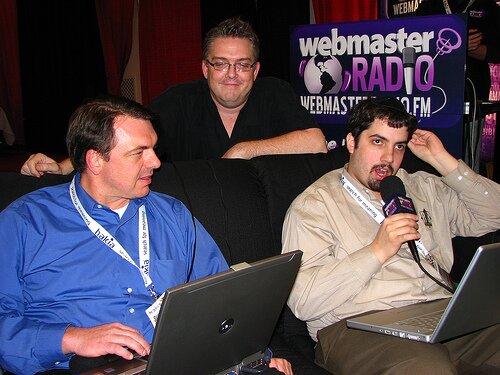One useful way to build some extra traffic to your site is to ensure that your images are optimized for . While ranking for terms in Google Image Search is unlikely to ever bring you massive amounts of traffic, the steps to optimizing your images for Google Image Search are extremely simple.
As an example, we will use the image of Barry Schwartz, Chris Boggs and Daron Babin at SES Chicago doing the Search Pulse on Tuesday evening.

Photo Credits SmallBusinessSEM.com
Note:I borrowed (stole) this image from Barry’s blog. Check it out - it’s always a great read.
The first two steps are simply common SEO sense - these should always be done on a site no matter what. These have the ability to influence your ranking in the main Google SERPS for keywords found in the title and description. The way they influence the image results is just the icing on the cake.
Steps to Optimize Your Images for Google Image Search
- Use Descriptive Filenames - A filename can present you with your first chance to include keywords in your images. Title the image with a word or short phrase which describes what is in the image. For example, rather than using a camera-assigned filename such as DSC05443.jpg, use a filename like barry-schwartz-chris-boggs-daron-babin-SES-chicago.jpg. Notice the way that I have used a dash (-) between the words in the title - this is commonly interpreted by Google as a space in the filename. This is the most search engine friendly way of labelling images.
-
Use the alt tag! - the alt tag in your image link code will allow you to include some more keywords describing your image. Additionally, the alt tag text will be displayed by Google Image Search in place of the filename in each search result. Therefore, use that as well when linking your code. Here is an example for the image we are using:

-
Get Included in Google Image Labeler - The is game in which you and a partner collaborate to write tags for images presented. You recieve points when you both submit matching tags. The matching tags are then assigned to the images, and taken into consideration for the Google Image Search search results.
In order to ensure that your images are included, access your account, and go to the management page for your site. In the left hand bar, you will see an link which says ‘Enhanced Image Search’. Clicking this link will present you with the option to opt-in to the features. This option signifies to Google that you are allowing them to use tools such as the Image Labeler to assist in the indexing of the images on your site.
These tips should provide you a boost in the amount of traffic you recieve from the Google Image Search. The first two steps will are common SEO sense, which should help your regular search rankings for keywords relating to the subjects of your images.
If you have any other ideas how to optimize your images, please comment!

Hey nice tips, also what about linking the images to larger sized pop ups with title keywords..?
or is this too much keywords!?!
That’s also a possibility. I guess in the post I only addressed the issue of inline images.
Of course, the effectiveness of what you are suggesting depends somewhat on the popularity of the page. That may work better for larger sites with a higher crawl priority, but for smaller pages, the additional link between Point A (your main content) and Point B (The Image) may be great enough that they don’t get indexed as fully.
As for whether there is too many keywords that way, I doubt it. Having a descriptive title, filename, and alt text are all important steps in accessibility, and I believe are encouraged by the Google Webmaster Guidelines; I highly doubt Google would see that as spammy.
SearchCap: The Day In Search, Dec. 7, 2006…
Below is what happened in search today, as reported on Search Engine Land and from other places across the web:……